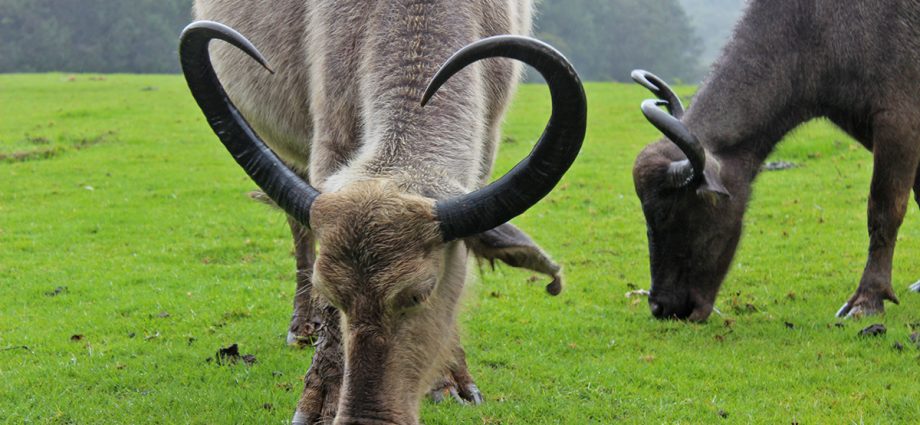Badagas love the word ‘Sege’ (warmth). But during February – April the warmth keeps growing and become intense heat. So this period is called Be:sege (Growing warmth). The heat will burn down the grass and the buffalos (the only wealth of the Badagas originally) will be starved. To overcome this Badagas earmarked certain places as Emmatti (Buffalo-Hamlet) or Hundi or Hundi on the slopes of the Nilgiri plateau where the grass will be relatively green). This was the time when the hills were one endless grassland with only shola trees and no man made forests.
This annual / seasonal migration of men and buffalos will begin in February. The women folk, children and the old will be left in the villages and the men will drive the buffalos to their respective hundies. They usually start at day break and reach the reach the destinations by night fall.
All through the long trek they sing to keep themselves from tiring. One song before crossing the first stream paying obeisance to Goddess Gangamma, another to keep the herd in check (every buffalo and cattle had a name) and finally a song of merriment and dance when the destination is sighted. ‘After seeing the lush green grass, my hungry stomach has filled up’ goes one song.
Occasionally, disputes and fights arose for the use of space or water leading to tragic events. Such stories have been immortalized by epic ballads like Bimaraiah – Kamaraiah.
The temporary dwelling-hut of the men had a low sleeping level, the necessary churn-pole for processing milk, and a fireplace set in a low platform. Cattle-huts surrounded the dwelling-hut, and there was also a separate calf-pen. Milk and milk products, excluding clarified butter, formed part of their diet.
In the latter days, milk was daily sold by the Badagas to tea shops nearby and clarified butter was sold in the Ootacamund shandy, both requiring a walk of anywhere between five to twenty miles. Grains and other edibles were obtained from the market on return.
After the British rule the planting of acacia or eucalyptus trees reduced the number of hundis. The Badagas were also required to obtain grazing permits from the Madras Forest Department in Ootacamund. A basic fee of 2.50 rupees and an additional charge of 50 paisa per buffalo and 25 paisa per cattle head was paid for a three-month permit.
Over time buffalos and buffalo-hamlets vanished from Badaga life and memory.
Image: A buffalo herd : Mongabay
Nilgiri Documentation Centre

